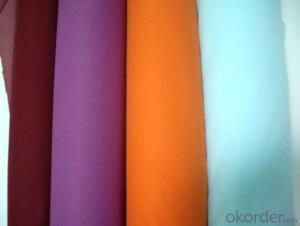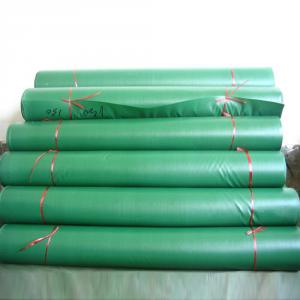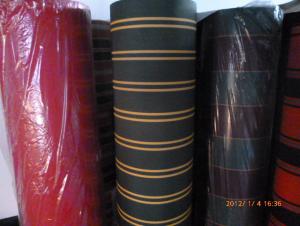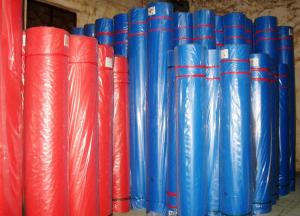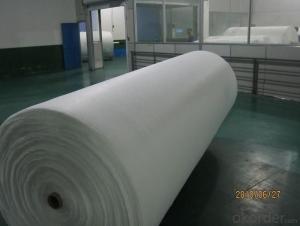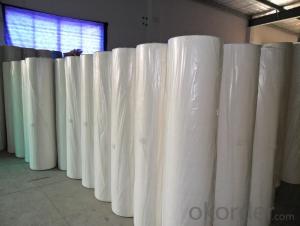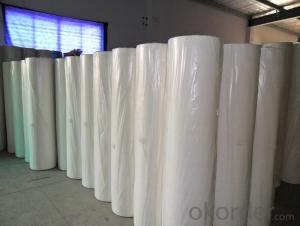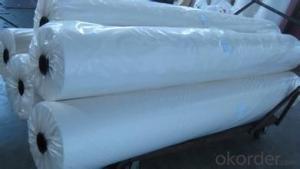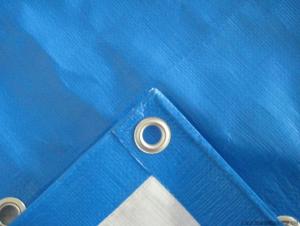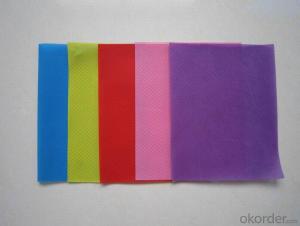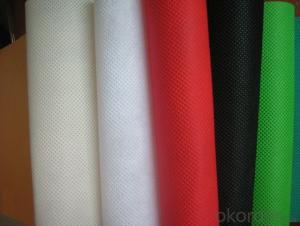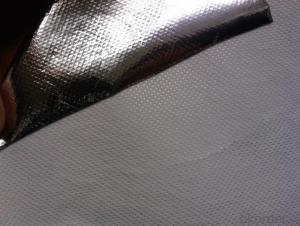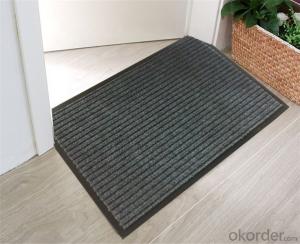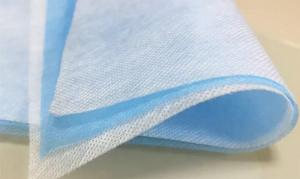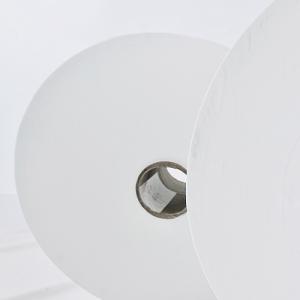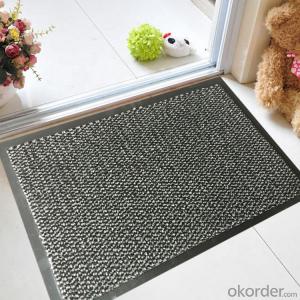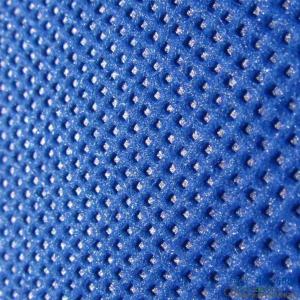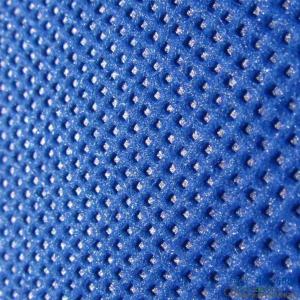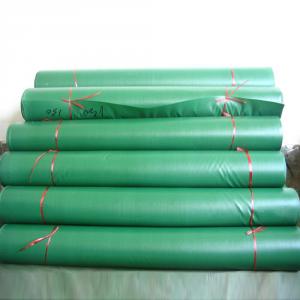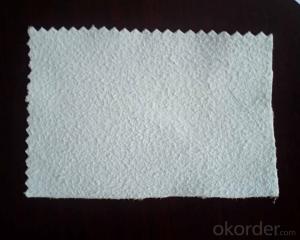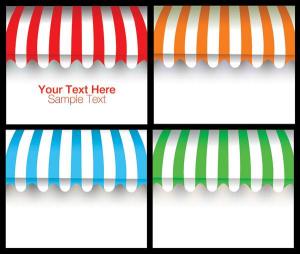polypropylene non woven fabric/Bubble Non woven Fabric roll/PP non woven fabric
- Loading Port:
- Shanghai
- Payment Terms:
- TT OR LC
- Min Order Qty:
- 1000 roll
- Supply Capability:
- 10000 roll/month
OKorder Service Pledge
OKorder Financial Service
You Might Also Like
Specifications
Non woven fabric(chemical bond nonwoven,chemical fabric)
Non woven fabric
Fiber composition: 100% PET,or PET mix Viscose
Width: Below 88 inch(220cm)
Weight:20G-150G square meter
Hand feeling: Soft, Hard,Crisp etc
Color: White,Super white,Black color etc
Item No:2016S,2016H,1020H,1025H,1035H,1050H,1065H
Chemical Bonded Non-woven fabric made of 100% PET,PET mix Viscose material etc,weight from 20-150g/m,width below 220cm,do soft,hard,crisp hand feeling,have white,super white,Black color.The product are widely used for Chef hat material,Handicraft product,clothes interlining,Embroidery etc.
Non woven fabric(chemical bond nonwoven,chemical fabric)
Health - Hygiene & Medical
Surgical Gowns
Gloves
Face Masks
Foot covers
Diapers
Caps
Bedsheets
Curtains
Pillow Covers
Slippers
Packaging
Sleeping Bags
Tarpaulins
Tents
Artificial Leather
Bags for Rice/Sugar etc.
Luggage
Vacuum Cleaner Bags
Tea and Coffee Bags
Buff Pads
Shopping Bags
Agriculture
Crop Covers
Turf Protections
Nursery Over wintering
Weed Control Fabrics
Root Bags
Containers
Capillary Matting
Other types of covers
Furniture Upholstery
Roofing and Tile Underlayment
Acoustical Ceilings
Insulation
House wrap
Pipe wrap
Sofa and Mattress Lining
Shoes & Garments
Coveralls
Pillow cases
Airline Headrests
Interlinings
Clothing and Glove insulation
Bra and Shoulder Padding
ADVANTAGES:
1. Lower labour costs as no weeding maintenance for years;
2. Water seeps through and can conserve soil moisture for improved growing conditions;
3. Air escapes – humidity rises through the mat for a more controlled growing environment;
4. Increase crop yields close to 25% due to improved growing conditions and absence of water stress and competition of nutrients absorption from weeds;
5. Minimises bacteria and fungus problems especially Algae;
6. Strong, woven construction or pressed fibre sheet resists tears and punctures;
7. Resistant to mildew, rot, water, sunlight and most of the agricultural chemicals
8. Fertilizer is applied on the mat, thus helping the owner or estate manager to monitor the progress of manuring;
9. Prevents soil erosion or leaching of soil nutrients or fertilizers applied;
10. Environmental friendly.
FAQ:
Q .What is the material of the non woven fabric ?
A .PP spunbond non woven fabric
Grade A: 100% Polypropylene
Grade B: 90% Polypropylene +10% filling
Q .What about the width of the non woven fabric ?
A .We can cut the fabric as your requirement. Our width of machine is 240cm, so the max of the width is 240cm
Q .What about the color ?
A .Any color is available. You just need to give me the Panton Num or send me your sample. Then we will make the color samples to you for approve
Q .What about the GSM ?
A .The thinnest of the fabric that we can produce is 9g, and the thickest is 250g. Normally the fabric that used in bag making is 50-100g, the agricultural used is 17-50g, the home used fabric is 40g and so on...
Q .What about the delivery time ?
A .We can finish the production in 2-3 days (40ft HQ)
Q .What about the price ?
A .We are the factory of the PP nonwoven fabric, We can supply you with good quality and favorable price
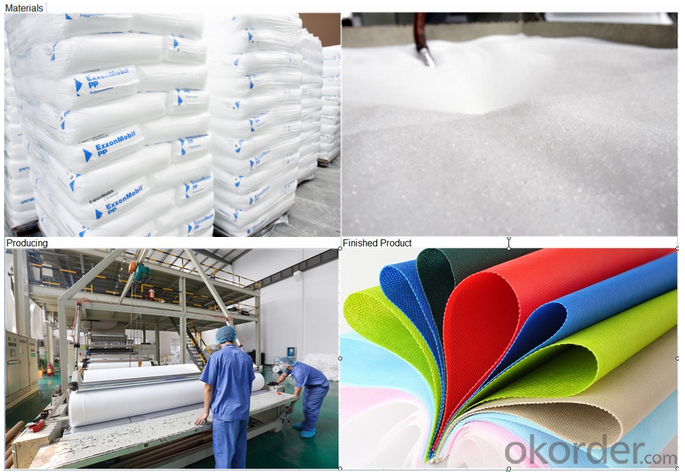
- Q:What is the specialty of textile science and engineering?
- Mainly to study how to use mechanical, physical, chemical and other high-tech means to meet the various fields and various functional requirements of the processing and performance evaluation of textiles.
- Q:Textile and garment industry, including a complete industrial chain which
- In the national standard in the definition of clothing, clothes, wear in the human body from the protection and decorative products, also known as clothing
- Q:The development of wool in Australia is not developed.
- Australia is rich in natural resources, is the world's major mineral resources producer and exporter, industry to mining, manufacturing and construction-based.
- Q:What are the invoices for the textile industry?
- If you are not a general taxpayer, the invoice you made when you purchased it is only an ordinary invoice, not an invoice, an invoice is invariably speaking for the general taxpayer, but some people are accustomed to buying materials or The invoice for the goods is called the invoice.
- Q:From the yarn to the finished textile fabric production process is how
- Is the famous American chemist Carothers and his research team invented. The main varieties of nylon are nylon 6 and nylon 66, accounting for the absolute dominant, followed by nylon 11, nylon 12, nylon 610, nylon 612, in addition to nylon 1010, nylon 46, nylon 7, nylon 9, nylon 13, Varieties are nylon 6I, nylon 9T and special nylon MXD6 (barrier resin) and so on
- Q:Why is cotton textiles shrinking?
- Cotton fabric in the textile dyeing and finishing process, the fiber to be a certain external force to be stretched, to be finishing, this stretch will be temporarily in the "stable" state
- Q:What is the amount of alkali in the textile mill
- Silk is the softest and most breathable raw material for all textile materials. The polyester is a synthetic fiber, non-hygroscopic, airtight, feel rough
- Q:How can paint points be removed during textile processing?
- An organic solvent such as butyl acetate or amyl acetate can be tried.
- Q:What is the anti-perspiration finishing of textiles?
- Many manufacturers put the anti-perspiration requirements made single-parent single defense fabric, in a sense is to complete the customer's request, but the requirements of high customers, only single-parent single effect is unable to meet the requirements, be sure to do Perspiration requirements.Hope to help you, if you want to do further understanding, see my account name and contact me
- Q:What is the imo standard in the textile industry?
- The IMO certification will specify the requirements to ensure that the organic status of the textile, from the harvest of raw materials, to the annotations of environmental and social responsibility manufacturing, is to provide credible guarantees to the end consumer.
1. Manufacturer Overview |
|
|---|---|
| Location | |
| Year Established | |
| Annual Output Value | |
| Main Markets | |
| Company Certifications | |
2. Manufacturer Certificates |
|
|---|---|
| a) Certification Name | |
| Range | |
| Reference | |
| Validity Period | |
3. Manufacturer Capability |
|
|---|---|
| a)Trade Capacity | |
| Nearest Port | |
| Export Percentage | |
| No.of Employees in Trade Department | |
| Language Spoken: | |
| b)Factory Information | |
| Factory Size: | |
| No. of Production Lines | |
| Contract Manufacturing | |
| Product Price Range | |
Send your message to us
polypropylene non woven fabric/Bubble Non woven Fabric roll/PP non woven fabric
- Loading Port:
- Shanghai
- Payment Terms:
- TT OR LC
- Min Order Qty:
- 1000 roll
- Supply Capability:
- 10000 roll/month
OKorder Service Pledge
OKorder Financial Service
Similar products
New products
Hot products
Related keywords
